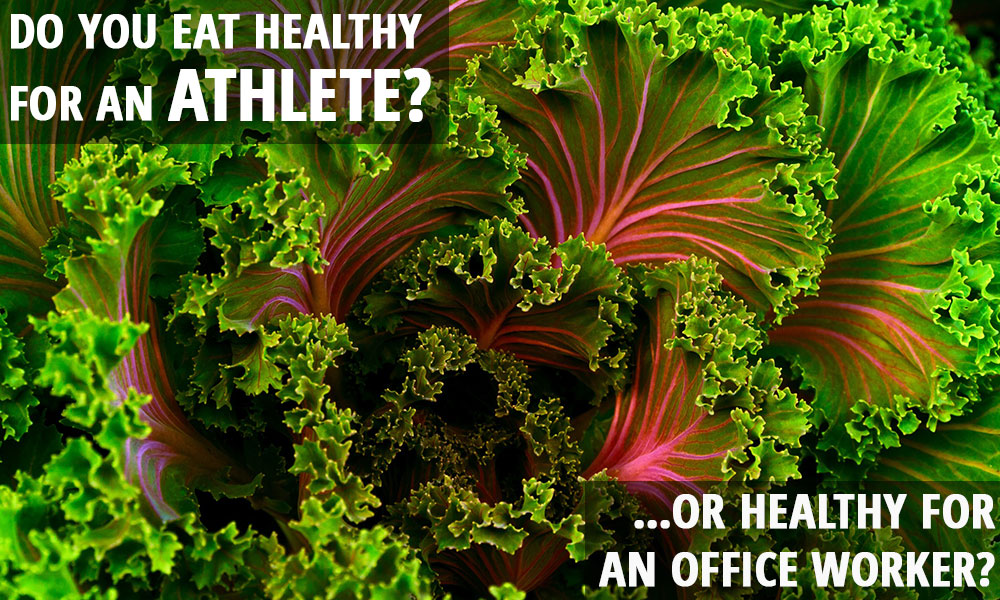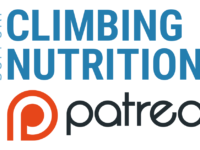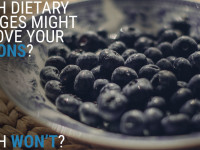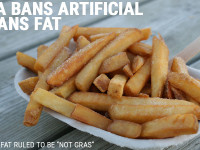When I see clients for sports nutrition, nine out of ten of them begin by saying, “I eat really healthy.” And usually this is true—I don’t think I’ve ever seen a client whose diet is abysmal. But there’s a question hidden in there that most people don’t think to ask, which is this: Healthy for whom?
Many people believe there is a “perfect diet”—a diet that, if followed to the letter, will result in as much health and as little disease as possible. Perpetuating this belief is the media, who always cover nutrition stories as if we’re still waiting for the holy grail of diets to be dug up, and the hordes of non-science-savvy nutrition bloggers who all think the perfect diet has already been found and why in the world aren’t you following it?!?
The thing is, though, the more you learn about nutrition (science-based nutrition, that is, not blog nutrition) the more you realize that the “perfect diet” is as dumb an idea as the “perfect exercise” or the “perfect color”. The most we can really say is that this diet is healthy for these people in those situations. Some diets may be more universal in their “healthiness” (like squats are a pretty universally great exercise), and others may be incredibly narrow in scope (like campusing)—but the fact is that “healthy” ultimately depends on who you are and what your goals are.
So when somebody says they “eat healthy”, I know what they mean… but I also know what they’re missing. Healthy for whom?
Different Groups, Different Needs
For some reason—despite the fact that we can all recognize that some diets are narrow in purpose, like renal diets—our reasoning breaks down when we hear the word “healthy”. In our mind, healthy is healthy and unhealthy is unhealthy. It’s a false dichotomy because food is neither inherently good for you nor bad for you, but it gums up our rationality and creates the notion of the “universally healthy diet”.
Different groups have different needs, though, which is at the heart of Medical Nutrition Therapy. If there was a single best diet that worked for every medical scenario, we wouldn’t need to understand what makes a diabetic’s needs different than a pregnant woman’s or a child’s or an elderly man’s or an athletes—we would simply prescribe the same diet over and over again and expect great results. Obviously, that’s not how it works.
Consider a type II diabetic patient, who cannot control their blood sugar like a healthy human can. This patient will need to carefully monitor their carbohydrate intake lest they increase blood glucose to dangerous levels. They cannot produce normal levels of insulin and their cells resist the effects of even the little amount of insulin they do produce and so the glucose has nowhere to go and builds up. But no matter how much sugar a healthy human eats in a single sitting, they’re not going to experience hyperglycemia (unless something else is wrong). Thus, a diabetic may have good reason to adhere to a low-carb diet or a diet that only includes low-glycemic carbohydrates—but the evidence is scant that this sort of diet is any healthier than any other “healthy diet” for a non-diabetic.
So a healthy diet for a diabetic is not necessarily “healthy” for anyone else. It may not be an unhealthy diet, but it’s not going to promote health any more than another diet. And in certain circumstances, it may be a less healthy diet, or at the very least may not be the healthiest diet you could choose. That’s the way of it—diets are not universal, they’re specific, and if you really want to be healthy then you need to let go of the idea of the universal “perfect diet”.
Athletes Are a Group, Too
So far we’ve talked only about medical diets, which seem to more obviously apply only to a specific group—but athletes are a specific group too, and they have special dietary needs. In fact, “sports nutrition” (or nutrition for athletes) is considered its own unique branch of nutrition that is separate from medical nutrition therapy; it has its own research and is in every way as complicated and advanced as any form of medical nutrition therapy, it just has less dire consequences when it’s ignored. Dietitians who want to practice sports nutrition are even suggested they get a special certification just for sports nutrition (the “Certified Specialist in Sports Dietetics” or CSSD), similar to if a dietitian specialized in oncology nutrition (“Certified Specialist in Oncology” or CSO) or renal nutrition (“Certified Specialist in Renal Nutrition” or CSR).
Good sports nutritionists know how the needs of an athlete differ from the needs of the general public. In other words, they know how the meaning of “healthy” changes when you begin to exercise at more than a recreational level, because “eating healthy” for an athlete means following different rules, some of which are decidely unhealthy for a non-athlete.
Here’s a basic example: How much sodium should a healthy adult consume? How about an athlete?
Current guidelines recommend that healthy adults get at least 1,500 milligrams of sodium and no more than 2,300 milligrams per days. At this level, there appears to be little-to-no risk for most healthy humans; our body will use what it needs, store a certain amount for later use, and excrete whatever is unnecessary through the urine. An athlete, on the other hand, can easily sweat 3,000 milligrams or more sodium out in a single session of exercise. During longer sessions in hot and humid weather, sodium loss from sweat can exceed 10,000 milligrams (that’s over a tablespoon of table salt). Whether or not you need to replace that sodium during exercise in order to prevent hyponatremia (low blood sodium) is irrelevant because we can objectively state that if you continue to excrete more sodium than you consume, you will eventually suffer hyponatremia. An athlete, therefore, must consume more sodium—often ridicidulous amounts more—than a sedentary adult if they wish to remain “healthy”.
(By the way, I do recommend you replace the sodium during exercise—there’s no reason not to and provides benefits aside from maintaining overall sodium balance.)
An even better example of how “healthy” means something different to an athlete is the question of sugar intake. The World Health Organization recently recommended that adults limit their total free sugar intake to less than 10%—or preferably 5%—of their total calories, which is equivalent to approximately 50 grams (25 grams for 5%) of sugar. (This doesn’t include natural sugars from fruit, just “free” sugar such as those in sweets, desserts, honey, table sugar, etc.) This is great advice for a sedentary adult who probably won’t break a sweat all day, but less well-suited to a hyperactive athlete. Athletes can benefit greatly from pure, “free sugars” during exercise because they are broken down and absorbed rapidly and therefore able to fuel working muscle right away.
Further, because athletes have such high caloric needs, they also have much larger “discretionary calorie” bins—they can meet every one of their nutrition goals (e.g., vitamins, minerals, fiber, protein, etc.) and still have plenty of room left over for nutrient-empty calories like pure sugar. Thus, the overall “healthyness” of an athlete’s diet is only very loosely connected with their overall sugar intake, and athletes can eat extremely healthy diets and still have free sugar intakes of greater than 10%. Don’t believe me? Take a look at this infographic. Sugar makes up over 20% of some their diets, yet I would be surprised if their health suffered in the slightest for it. (Unironically, the athletes with the lowest sugar intakes in the infographic also have the worst diets, though I won’t presume this is actually what their day-to-day diet really looks like.)
Athletes can’t just follow any old nutrition guideline—they need guidelines specified to their needs.
Climbers Are Athletes, Too
Thus we arrive at the final point, and my answer to that all-too-common first statement of “I eat really healthy…”. I believe you. Truly, I do! I get the privilege of actually looking at your diet, and I see you eat plenty of fruits and vegetables, and that you choose healthy meats, and that you don’t eat tons of junk food. Your diet is healthy… it’s just inadequate for an athlete. Climbers are athletes, and athletes have special needs, ergo why you’re meeting with me in the first place: to help you eat healthy for an athlete.
The moral of the story is this: you can’t say something is “healthy” without understanding what healthy means in the context of your goals. If one of your goals is to be as physically strong of an athlete as you can be, then healthy means something different than it would if the only exercise you ever got was the occasional jog. The average American is overweight or obese because they eat an average of 3,800 calories a day, yet you may need over 4,000 on a heavy training day, and some athletes have even greater needs bordering on the absurd (e.g., 12,000+ calorie days on the Tour de France). It’s as unhealthy to limit yourself to the recommended 2,000 calories for a sedentary adult male as it is for the sedentary adult male to eat 4,000.
Now, there’s a lot more that goes into healthy eating for a climber—much more than could be covered in a single post. But I wanted to put this idea out there first (that climbers are their own population with their own needs) because it will be a recurring theme on this blog. How could it not be? Whenever we talk about sports nutrition, we’re talking about how a healthy diet changes because of what you do. My goal is to help you understand how “healthy” changes in relation to your goals so you can perform your best.















Great article, I’m excited to learn more!